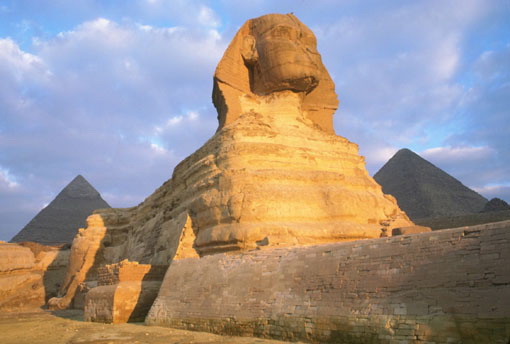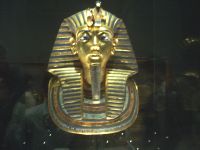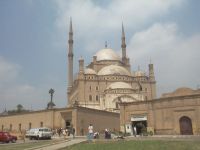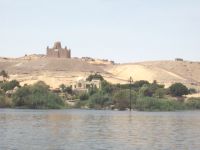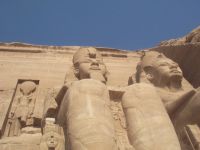| |||||||||||||||||||||||||||||||||||||||||||||||||||||
| |||||||||||||||||||||||||||||||||||||||||||||||||||||
|
Home l About l Programs l Training l Diary l Tourism l Contacts |
|||||||||||||||||||||||||||||||||||||||||||||||||||||
|
|
|||||||||||||||||||||||||||||||||||||||||||||||||||||
|
|
|
|
|
|
How to Best See Egypt |
This is probably the toughest thing to write because Egypt has just so much to offer. And it's so varied: what appeals to one person doesn't do a thing for the next.
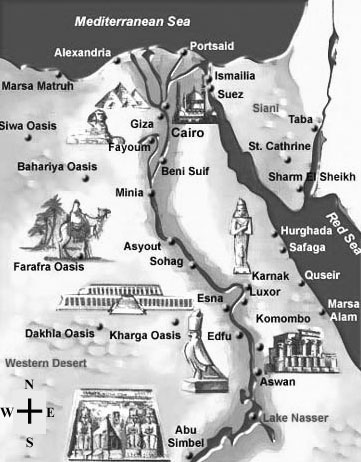
|
Minimum Highlights |
At a minimum you will want to spend two or three days in Cairo. One of those days should be spent on the west bank of the Nile playing amateur archeologist at Memphis (one ancient capital), Saqqara and the Pyramids and Sphinx in Giza. Back in town, at least half a day is needed to see the Egyptian Museum which in itself should be one of the wonders of the world. And you will want to get to The Citadel, shop in the bazaars of Khan el Khalili and maybe visit Coptic Cairo.
|
|
|
|
In the far south, Aswan is near the monumental High Dam and other interesting sites such as the Unfinished Obelisk, Philae Temple (which was moved in its entirety for a site flooded by the Dam), and the tomb of the Agha Kahn which, although now closed to visitors, provides spectacular views of the Nile and Aswan (and a fun ride on a traditional felucca to get there). And, of course, just about 150 miles south is Abu Simbel, Ramses' monument to himself intended to warn the Nubians that they were entering Egypt, which was also relocated because of the rising waters. In fact, that relocation was a massive cooperative engineering effort by dozens of nations under the guidance of the United Nations, which is still considered one of the largest engineering projects in history.
|
|
|
|
Then there's Phil's personal favorite city in Egypt: Luxor. It doesn't seem possible that there can be so many sights to see concentrated in one place but there are. How is this for a couple of days: start by visiting the Luxor Temple right in the middle of the city and then take a calesche (horse drawn buggy) to the complex at Karnak. That's just your warm up. The next day, arise at 4:30 and stumble down to the river to board the rattletrap ferry to the West Bank where your donkeys will be waiting for a dawn ride to the Valley of the Kings. Enjoy a leisurely cafeteria style breakfast and then explore selected tombs of Egypt's greatest pharaohs. Hop back on the donkeys to ride across the ridge to the Valley of the Queens. After lunch, wander around the area taking in whichever antiquities beckon, the Temple of Queen Hatshepsut, the Ramesseum and Deir Al-Medina are particular favorites of mine. And there still are the Colossi of Memnon and a visit to one of the many alabaster factories and maybe a journey deep into one of the mines. In the evening, the bazaars are pulsating with life and it's a good place to gather up the souvenirs as prices are much lower than in Cairo and the people seem genuinely happy to see you.
|
Antiques of Egypt |
Whatever we know today of the ancients we know from two kinds of physical evidence: the translations of the hieroglyphs and the excavations of the antiquities. These are prolific, showing incredible artistic mastery and amazing versatility that ranges from tiny, finely wrought gold ornaments to the most massive structures on the planet. And the story they tell gives us a tantalizing glimpse of how history's first and longest lasting major culture endured virtually unaltered through millennia.
|
|
Common knowledge links Egypt with mummies, the elaborate preparation for the afterlife and the cult of the dead. The more you learn of their civilization, however, the more you come to know that what the ancient Egyptians truly developed was a cult of life. In the antiquities that have survived we see expressed the common hope that life will be eternal. Their belief in the eternal was, to the Egyptian mind, corroborated by the unchanging natural order of daily living: the sun always rose in the east and traveled daily across the sky, the stars and planets charted a predictable course through the heavens, the Nile annually rose and flooded the valley with life-giving fertile soil -- to the ancients the cycle of life to death to life was as natural as their world. |
These were the underpinnings of their religion, their art and their structured society. Every pharaoh became the incarnation of god on earth and his ritualistic role was to ensure that life's cycle continued uninterrupted. Whether represented in limestone, granite, faience, gold or papyrus, each ruler had depicted the culture's central birth and rebirth saga with, of course, himself playing the central role. The edifices and artifacts that exist today were built to carry those depictions into eternity. The pharaoh's likeness and the hieroglyph cartouche of his royal name soared heavenward on obelisks, adorned temples constructed for the gods' (and his own) glory, and finally were immortalized in the mortuary monuments where generations of priests would keep his earthly presence alive after his immortal rebirth in the afterlife.
As you visit the Giza pyramids and its guardian Sphinx; the Karnak and Luxor complex; the Valleys of the Kings, Queens and Nobles; Philae and Abu Simbel; and especially as you wonder at the incredible collection in Cairo's Egyptian Museum -- remember that these are monuments meant to last forever to celebrate the indestructibility of life.
|
Visiting Cairo |
Cairo - largest city in Africa, in the entire Arab world in fact, and entry to Egypt ancient and modern – lives comfortably poised between past glories and 21st Century sensibilities. Once known as the “Mother of the World,” Cairo has been surpassing visitors’ expectations since the 14th Century and has only gotten better and better at it.

The above photo shows amazing Nile View in Cairo At Night; including Cairo Tower, Cairo Opera House, Nile Cruises & number of 5 Stars Hotels; Grand Hyatt, Four Seasons, Sofitel and Semiramis Hotels.
To see and do all the highlights would exhaust a well-packed two weeks. Most excursions, and ours are no exception, allocate 3 – 4 days. In that time you can comfortably take in the premier destinations, capture the city’s unique flavor and leave a lot for the return visit you’re going to want to make. You also will be able to pursue some unscheduled special interest visits. We always recommend the purchase of a good guide book about Egypt (Lonely Planet - Egypt) not only to explain what you’re seeing but to put it all in historical and cultural perspective.
|
|
With that said, let’s talk specifics. We schedule Cairo at the end of our tours because it’s more meaningful to tour the city after seeing the country, plus it’s nice to spend final nights settled at the same hotel. Your visit to the Egyptian Museum makes more sense once you have the framework of picturing their incredible artifacts in place as they were intended. |
Incidentally, there are plans to build a new, larger museum – this comes as wonderful news as the existing 1902 structure has priceless objects literally stuffed into every nook and cranny. The 12th Century Citadel, begun by Salah-ad-Din (the “Saladin” of Crusades’ fame) was the home of virtually all of Egypt’s rulers, seat of government and powerful military fortress until the mid-19th Century. Look out over its ramparts and see all of Cairo at your feet and imagine how intoxicating absolute power must have been. Yet Cairo has always been diversified and multi-cultural. Coptic Cairo recaptures the ancient roots of one of the earliest branches of Christianity, while the Ben Ezra Synagogue fostered the Sephardic Rabbinical tradition. Cairo bazaars or “souks” are famous worldwide and none more so than the Khan al-Khalili. A mecca for tourists with every conceivable souvenir to be haggled over, it borders the possibly more interesting native souks where modern Cairenes trade, eat and gossip as they have for centuries.
|
|
As Egyptian cities go Cairo is a youngster, dating only from its 641 CE founding as the conquering Arabs’ capital. Multi-millennia older, yet now almost swallowed by Cairo’s western sprawl, is the last remaining Wonder of the Ancient World. The Pyramids and Sphinx complex, Egypt’s #1 attraction, never fail to mesmerize and with so much written about them through history we will only say that seeing them leaves an indelible impression. |
|
Just a short drive south are the remnants of Memphis, Egypt’s first capital founded, legend has it, by Menes, first ruler of the First Dynasty. Its enormous necropolis, Saqqarah, contains tombs, pyramids, a mausoleum for the holy Apis bulls and massive architecture, including the Step Pyramid, the world’s first stone monument. And through it all the Nile’s constant presence reminds each visitor that without the mighty river, nothing here would have ever come to exist. The Nile, always believed to be eternal, always in reality was life. The many lives the river has seen you’ll see in Cairo. Cairo is also famous for coffee shops where the Egyptians gather to drink (only tea), smoke (only flavored tobacco), gamble (on dominoes!), talk, sometimes watch soccer on television, bond and do whatever else men do in a large female-free group.
|
|
|
|
One of the delights for Westerners, male and female alike, is to penetrate this semi-closed society, be welcomed as equals, offered every courtesy (hospitality is ingrained in the Arab world) and partake of this very civilized, very ancient and thoroughly comfortable custom. The essential elements are these: convivial companions, a passing street scene and time to enjoy both, enhanced by karkaday shai, hibiscus flower tea, and sheesha with flavored tobacco. |
Sheesha tastes terrific, instills a mellow mood and gives you a decidedly Egyptian view of the world. But this view was not universally reciprocated because Egyptian women do not participate. Western women are tolerated and sometimes receive the evil eye treatment for having transcended gender boundaries. Essentially, burning coals are placed over tobacco, usually molasses or apple flavored, and the smoker inhales pulling the smoke through the water to cool and smooth the sensation. Sheesha tobacco seems to coat the throat, clear or fog the mind depending on one's mood and release the conversational urge. Narghila pipes are shared between friends, conversation flows, time passes and not a lot of money changes hands as it costs only about 8 cents a pipe for 10 to 15 minutes of enjoyment.
|
Visiting Alexandria |
The second largest city and the main port of Egypt, Alexandria was built by the Greek architect Dinocrates (332-331 BC) on the site of an old village, Rhakotis, at the orders of Alexander the Great. The city, immortalizing Alexander's name, quickly flourished into a prominent cultural, intellectual, political, and economic metropolis, the remains of which are still evident to this day.
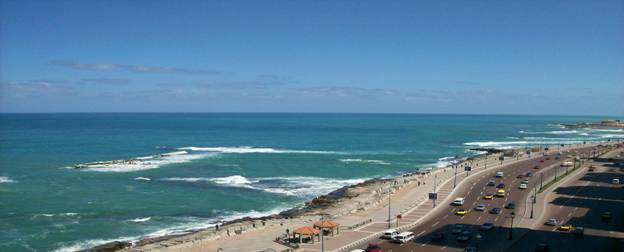
It was the renowned capital of the Ptolemies, with numerous monuments. It was the site of the Lighthouse, one of the Seven Wonders of the Ancient World, as well as the Great Library. It was along these shores that history took a tragic turn at the time of Cleopatra, Julius Caesar, Mark Antony, and Octavian. Alexandria lies north-west of the Nile delta and stretches along a narrow land strip between the Mediterranean Sea and Lake Mariut (Mareotis). It is linked to Cairo by two major highways and a railroad line. It is one of the most notable summer resorts in the Middle East, for, in addition to its temperate winters, its beaches, with white sands and magnificent scenery, stretch for 140 km along the Mediterranean Sea, from Abu Qir, in the east to Al-Alamein and Sidi Abdul Rahman, in the west.
|
|
|
|
The
new library of Alexandria:
it is built on the site of the ancient library. Seeing the
location helps you understand how it would have burned when
the city caught fire. The new structure has a huge curved wall
that is covered with writing samples from every known language
in existence. I believe this is whether the language is
actually in use today or not. The library has a unique
transparent roof that allows indirect, reflected sunlight to
illuminate the interior of the building. There are no shadows
inside that I could detect. This library is certainly a modern
wonder.
|
Visiting Luxor |
One of the soundest pieces of travel advice we’ve ever given we will repeat here: take some time to learn about Luxor before seeing it. Yes, you will have a skilled guide who will regale you with tales of temples, tombs and treasure. Yes, you will walk the same stone passageways once traveled only by royal entourages and worshipping priests (comfortable, sturdy shoes are essential here). And yes, you’ll wish for panoramic vision to better absorb the massive majesty of the monuments. Fully expect to be overwhelmed by the effects of Karnak, Luxor and the entire West Bank of the Nile. But true appreciation goes hand in hand with understanding and for that, you’ll need to invest some quality time with a good guide book. All of our set tour itineraries allow two days in Luxor (of course if you’re customizing your itinerary and ancient Egypt is a passion, plan on at least another day here) and a very full, energetic two days it is.
|
|
Back in the 19th Century when archeologists began to uncover the secrets of the ancient Egyptians, “wintering” in Upper (southern) Egypt was the fashionable destination for Europe’s well-to-do. As you stroll along Luxor’s Corniche, the riverside thoroughfare, pass the stately hotels, listen to the clip clop of the colorful caleshe horse taxis, you can feel a kinship with these early travelers. The mysteries that drew them are just as potent today, although Luxor has grown from a sleepy backwater to Egypt’s #2 destination with its own international airport. It’s a graceful, welcoming city, comfortably accommodating tourists and scholars, adventurers and vacationers. All with an easy, self-assured charm honed by four thousand of years of “hosting.” |
|
|
|
|
|
Today’s Luxor (from the Arabic al-Uqsor “the Palaces”) stands on the site of Thebes, capital city throughout the dynasties of the New Kingdom and, without doubt, one of the most impressive imperial cities ever conceived. On the river’s east bank are the two tremendous temple complexes, Karnak and Luxor, built to honor the Theban Triad of Gods: supreme Amun-Re, his consort, Mut and their son Khonsu. |
Both were built over centuries, with succeeding pharaohs adding layer upon outer layer of courtyards, pylons, shrines and hypostyle halls, lavish sculpture and decorations. Karnak covers 60 acres and is the largest dedicated religious site ever constructed. Ramses the Great added Luxor’s phenomenal peristyle court and established his grandiose building concepts. Ramses’ influence is everywhere…lying collapsed at the foot of his West Bank mortuary temple, the Ramasseum, is the largest granite colossus on record, the statue which inspired Percy Bysshe Shelley in 1818 to write … “Ozymandias King of Kings. Look on my works, ye Mighty and despair.”
Ramses the Great was certainly the best known of the luminous New Kingdom pharaohs. But all were dedicated builders of spectacular monuments for this world and the hereafter. Their tombs and those of their queens and nobles were carved into the salmon pink rock within the West Bank’s Valley of the Kings, Valley of the Queens and Valley of the Nobles. We believe the best time to start the journey to the tombs (fewest tourists and eerily clear dawn-streaked light) is early morning. Best mode of transport: donkeys! Guaranteed to be an experience you will never forget. When visiting the tombs remember that the delicate inscriptions, fanciful artwork and intricate carvings were never intended for viewing by living beings, rather as an aid to the deceased king as he journeyed towards his final judgment in the underworld. Besides the tombs the West Bank holds other treasures like the mortuary temple of the only queen to rule as Pharaoh, Hatshepsut. This remarkable edifice is a forerunner of clean, classical design and is decorated with the most amazing frieze paintings, some with original colors still vibrant, of her exploits in far-off lands. And as long as there were tombs there were tomb robbers; their descendents live today on the outskirts of the West Bank, working, mining and carving in alabaster factories those intricate, traditional designs known worldwide.
Is it obvious that Luxor is a special favorite with us? We hope so. Luxor is a living, breathing museum, a collection of the phenomenal, a place of sheer wonder. A place you’ll never forget.
|
Visiting Aswan |
Aswan, until Napoleon’s onslaught in 1799, marked the southern reach of the navigable Nile – the First Cataract – and therefore, the end of the civilized world. This formerly sleepy little trading post with the wonderful winter climate has always been the crossroads between Egypt and the African interior. Even today you’ll find goods, foods and crafts from Aswan’s melting pot cultures sold by a colorful ethnic spectrum in Aswan’s equally colorful souk (with prices better than in Cairo, as you might expect). Aswan’s pace is comfortably lethargic, tempered by time measured in millennia, and very conducive to the carefree float of a sailing felucca.
|
|
The felucca sail is a must. In your felucca, possibly the world’s most graceful craft, if you’re really lucky you’ll spot Horus look-alike falcons nesting on deserted stretches, glide past the starkly modern Aga Khan Mausoleum and the granite pachyderm humps of Elephantine Island. Granite was Aswan’s ancient claim to fame; its quarries furnished raw material for much of the sculpture at Karnak and Luxor. The Unfinished Obelisk is a prime example. It can be seen in a quarry just south of Aswan still attached to bedrock and, had it not developed a fatal crack, would have weighed an amazing 1,100 tons when completed. |
|
In the 20th Century Aswan came into its own with the construction of two dams designed to regulate the annual Nile inundation. The river’s flooding literally meant life or death for Nile Valley agriculture and the ancient Nilometer measured the extent of the inundation that could be expected down river in the north. The Aswan High Dam, a modern day triumph built in the 1960’s, created Lake Nasser and brought both water and hydroelectric power to Egypt. BUT threatened to flood over some of the country’s treasures. Stone by stone these treasures were relocated and painstakingly reassembled.
|
|
|
|
The beautiful Temple of Isis at Philae was saved, as was the rarely visited but fascinating Kalabasha Temple, also the tiny Temple of Dendera (residing now in New York’s Metropolitan Museum of Art – a gift in appreciation for America’s monument rescue assistance), and the world’s most impressive saved antiquities: the rock-cut temples at Abu Simbel. Built by Ramses the Great to honor himself (of course) and his beautiful queen, Nefertari, they served as a warning to southern peoples that Egypt’s border began at this point. It is absolutely worth the short air trip from Aswan to view not only the ancient monuments but the engineering marvel of their reconstruction into what is the 2nd largest dome in the world. |
A Nubian banquet is just the thing to cap your Aswan visit. These joyful, graceful people can put on a great party and you’ll be smiling and dancing with them before you know it (bring lots of film!). Our set tours spend at least a full day in Aswan, but, if you have the time, there’s enough here to occupy a lazily spent two or even three days.
|
Visiting Sinai |
Stunningly desolate isolation, a delicate peninsular boundary between 2 continents, holy land and war zone, the Sinai has always been a special place. It’s only been in the last few years that Sinai has shed its buffer zone image and opened its secrets to the adventurous traveler. Now, as a mecca for camel-trekkers, scuba enthusiasts and those in search of “something completely different,” Sinai welcomes tourism. And, of course, once there it’s a short hop on to Israel or a scenic ferry ride to Jordan.
|
|
“Take off thy shoes from off thy feet, for the ground on which thou standest is holy ground,” said the Lord to Moses (Deuteronomy 3:13). And on that spot Roman emperor Justinian built a fortress monastery in 537 C.E. St. Catherine’s, named for an Alexandrian 4th Century martyr, has been a place of pilgrimage for centuries. The Chapel of the Burning Bush, the incredible 6th Century mosaics, climbing to see the sun rise on Mt. Sinai -- these are all part of the experience you can share. |
Traversing the ancient mountain ranges from St. Catherine’s east to the Gulf of Aqaba is a journey through some of the most enthralling landscapes on the planet. The Gulf, part of the long geological fault running south through Africa’s Great Rift Valley, is only 10 miles wide but in places as much as 6,000 feet deep. The coral reefs lining the shores teem with life and color and many say they offer the world’s best and unspoiled diving. In a beautiful natural harbor the town of Sharm El Sheikh is a center for southern peninsula diving and offers boat dive and liveaboard access to this natural paradise.
Further up the coast the small town of Dahab offers diving as well as camel trekking into the interior. And if you’ve never had the good fortune to sail a “ship of the desert,” go ahead and take the plunge (sorry! very bad pun). Yes, you can even get to your dive destination via camel…the camels tote tanks and all equipment and it probably worth doing for the photo value alone! It’s practically impossible to fall off a camel and once you get accustomed to the rolling gate, you can focus on the view from sitting 7 feet high. It gives the world a whole new perspective, decidedly laid-back and “Bedouin.” And offers an insight as to what native life has been for hundreds of years in Sinai’s 10,000 square miles of breath-taking emptiness. Yes, the Sinai has been, and always will be, a very special place.
|
Scuba Diving in The Red Sea |
The Red Sea is arguably one of the top destinations in the world for excellent reef diving along with some pretty exciting wreck diving. There are also a few scattered drift dives which can be absolutely awesome at times. There are two general areas which are most popular with the majority of divers: the northern area centered on Ras Mohammed at the tip of the Sinai Peninsula, and the southern area which includes everything for hundreds of miles starting about 25 miles south of Hurghada.
|
|
Most of the Red Sea is accessible from Egypt although one can also dive from Israel, Saudi Arabia, the Sudan, Eritrea and Jordan. All of our experience has been from Egypt because the one dive location in Israel, in Eilat, is too limiting; Saudi Arabia has limited infrastructure and access is pretty much limited to the military; and the Sudan and Eritrea are, just too difficult and cumbersome to get to and all the diving is European camping style in Jeep safaris, to say nothing of the civil wars... |
|
In the north there are two main land based areas. The most well known is, of course, Sharm El Sheikh. Built up since the War, it is a typical European style holiday village and a lot of fun. There is a wide boardwalk running for several miles along the beach, bordered by one hotel complex after another. There have to be a couple of dozen dive shops and more dive boats than are countable scurrying back and forth between Sharm, Ras Mohammed and the Straits of Tiran.
|
|
|
|
In Sharm, we work primarily with Sinai Divers. That is mainly because their operation is reliable and safe, and they know how to show divers a good time. They have been in operation for almost 25 years and have all the facilities one could want including equipment rentals and repair and a full service photo and video center. They even have a little gift shop with some interesting dive-related clothing I haven't seen elsewhere. |
As with all operations in Egypt, diving is European style. That is, 2 dives taking up most of the day with a 3 hour surface interval during which a hearty lunch, cooked aboard the boat, is served. Expect little in the way of free afternoon time when you are diving here. Shore diving is also available, but few Americans seem to want to take advantage of it; I think that's wise because most of the shore sites seem to be fairly well dived out. There is an excellent selection of hotels, from the 3-star Ghazala (where Sinai Divers is located) to 4- and 5-star luxury palaces. All are within walking distance of the shop and where you stay depends mostly on your pocketbook and desire for amenities.
Home l About l Programs l Training l Diary l Tourism l Contacts
Copyrights © 2007 - Egyptian Association For International Medical Studies (EAIMS)
